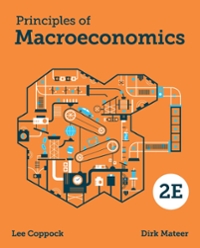Question
SECTION B - Case Study [20 marks] Answer all the questions from this section. Common Misconceptions about Fiscal Policy In 1962, John F. Kennedy was
SECTION B - Case Study [20 marks] Answer all the questions from this section. Common Misconceptions about Fiscal Policy In 1962, John F. Kennedy was president of the United States, and Walter Heller was one of Kennedy's economic advisors. Heller told the president that the economy needed a tax cut (a form of expansionary fiscal policy) to keep it from sputtering. In December, in a speech before the Economic Club of New York, President Kennedy said, "An economy hampered by restrictive tax rates will never produce enough revenue to balance our budget just as it will never produce enough jobs or enough profits." Then in January 1963, he said, "It has become increasingly clear that the largest single barrier to full employment . . . and to a higher rate of economic growth is the unrealistically heavy drag of federal income taxes on private purchasing power, initiative and incentive." Kennedy proposed expansionary fiscal policyin the form of a tax cutto raise economic growth and lower the unemployment rate. He proposed lowering the top individual income tax rate, the bottom individual income tax rate, the corporate income tax, and the capital gains tax. He was assassinated in Dallas before Congress passed his tax program, but Congress did pass it. What was the result? When the tax bill passed in 1964, the unemployment rate was 5.2 percent; in 1965, it was down to 4.5 percent; in 1966, it was down further to 3.8 percent. The tax cut is widely credited with bringing the unemployment rate down. As for economic growth, when the tax cut was passed in 1964, it was 5.8 percent; one year later, in 1965, the growth rate was up to 6.4 percent; and in 1966, the growth rate was even higher, at 6.6 percent. Again, the tax cut received much of the credit for stimulating economic growth. Questions: 1. What is the proper role of fiscal policy in the economy? (5 marks) 2. List down 3 objectives which could be achieved from expansionary fiscal policyin the form of a tax cut? (3 marks) 3. Although tax changes can have a potent influence on aggregate demand, they have other effects as well. Part of the Kennedy proposal was an investment tax credit, which gives a tax break to firms that invest in new capital. Discuss the potential effects of this investment tax credit. (7 marks) 4. Demand-side fiscal policy may be ineffective at achieving certain macroeconomic goals because of (1) crowding out and (2) lags. Explain these two concepts. (5 marks) (Total marks for Section B: 20 marks)
Step by Step Solution
There are 3 Steps involved in it
Step: 1

Get Instant Access to Expert-Tailored Solutions
See step-by-step solutions with expert insights and AI powered tools for academic success
Step: 2

Step: 3

Ace Your Homework with AI
Get the answers you need in no time with our AI-driven, step-by-step assistance
Get Started


